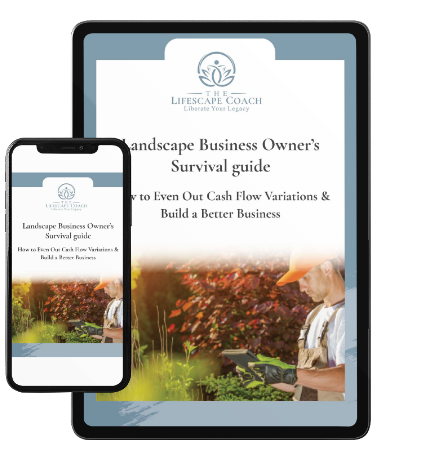Should Landscape Business Owners Pay Top Dollar for Employees?
Industries across the country are being hit hard by the pandemic fallout and landscape businesses are included. Many owners are desperate for help – almost any help – to relieve the stress and risk that comes with too much business and not enough workers. Especially valuable are potential employees that come with the experience and expertise to immediately jump in and rescue a struggling company wrestling with the growing demand for service from current and prospective clients.
Money isn’t everything.
Many business owners make the mistake of thinking that they can buy their way out of this dilemma. And while good pay is certainly an attractive feature for most prospects, money is not the top reason for skilled workers to take a job or leave a job. In fact, according to research by the Hinge Institute, compensation ties at a distant second with strong leadership and a clear vision.
Studies have shown that the deciding factor for accepting a job offer is respect and a positive company culture – how a company values and treats its workers. The pandemic has caused many workers to re-examine their lives and careers, questioning how much their current positions are really worth to them and if they should consider a change. As a result, record numbers of workers quit or never return to their jobs, often burned out from feeling overworked and undervalued. In a trend business analysts dubbed The Great Resignation, many employees have cited lack of respect and exploitation as the number one reason for turning their backs on employers.
Unfortunately, to fill vacancies left by The Great Resignation, some overworked landscape business owners are searching for new employees, especially for managerial roles, without considering the causes for those vacancies. They craft job descriptions that read like a laundry list of multiple tasks and responsibilities that make the job seem overwhelming at first glance.
While it’s understandable why an overworked owner would create positions like that, it’s unlikely that anyone would want those jobs, even if they paid top dollar. That’s simply because the job description has burnout written all over it. Anyone with real talent will read that between the lines. Anyone with experience will see the limitations of the list. It’ll be those with unfettered ambition that will answer the ad and while it may pan out, more often than not, it doesn’t. Burn out gets the better of them.
Instead business owners should heed the lessons of The Great Resignation and consider crafting positions with the interests of prospects in mind and what might motivate them besides money. That’s because job-seekers are increasingly taking the advice of people like career coach and best-selling author Ken Coleman. In his book, From Paycheck to Purpose, Coleman urges individuals to get clear on the work they were born to do and why and connect with the right people who can open doors to their dreams. He believes that everyone can achieve their dream job by doing the work they love and accomplishing results that matter.
Perspective is everything.
A significant part of the reason why landscape business owners might struggle with developing positions and job descriptions that attract top talent is because – let’s face it – no one likes taking the time to do those things correctly. Recruiting is hard, no doubt. Retention takes time and effort, for sure. But why is it that these two are framed as negatives in the minds of most business owners?
The reason is that most business owners made a choice to start a business because they wanted to “be their own boss.” They wanted to practice their craft their way, unfettered by a boss who was telling them otherwise. I get it. That was me in the beginning.
But the truth is that if you’re an owner with an entrepreneurial mindset, you know, deep down, that practicing the skills you love so much is no longer your central role in your business. Instead, you need to focus on building the infrastructure that makes successful landscaping possible. It’s a noble and exciting endeavor that will help ensure a stable, profitable business that paves the way for others to do the work that you hold in such high regard.
To accomplish this means changing your perspective. Instead of resenting the need to hire others to do what you’ve loved and creating unreasonable job requirements that will make it difficult to attract the right talent, you need to flip your perspective. Look at your business from the outside in and see the good and the value it offers that will help attract and retain quality employees ready and willing to stay for the long haul. See how far you’ve come and all you’ve achieved and use that insight to create a positive, supportive work environment that attracts the right people. Create the company culture that everyone wants to be a part of.
Business strategy coach Dan Sullivan discusses the importance of perspective in his book, The Gap and The Gain. “Most people, especially highly ambitious people, are unhappy because of how they measure their progress. We all have an "ideal," a moving target that is always out of reach. When we measure ourselves against that ideal, we're in ‘the GAP.’ However, when we measure ourselves against our previous selves, we're in ‘the GAIN.’”
According to Sullivan, this is a “deceptively simple yet multi-layered concept that will have you feeling good, feeling grateful, and feeling like you are making progress even when times are tough, which will in turn bolster motivation, confidence, and future success.”

Creating the company where you would like to work.
Businesses in growth mode sometimes put stumbling blocks in their own way by developing lots of rules in a well-intentioned effort to keep employees focused, disciplined, and on the right track. It’s a normal response because fast growth often results in hasty and conflicting managerial decisions that can leave an internal labor force fragmented and unclear about their roles. Rules are generally an effort to provide structure and stability in an ever-changing, dynamic environment. An unintended side-effect can be a business hamstrung by a bunch of rules that stymy creativity and motivation.
Studies have shown that doing the opposite actually works better. In No Rules Rules, Netflix CEO and co-founder Reed Hastings describes the unconventional business practices his company adopted that enabled it to become an industry leader. Among the most fundamental concepts were these three:
- Hire and keep the best employees—at any cost
- Promote candor through constant feedback at all levels
- Eliminate controls, such as allotted vacation time and approval processes
In short, the company committed to spending money to hire and retain the best talent and eliminating restrictive rules to encourage employees to innovate and take accountability and responsibility for their actions – which includes failures as well as successes. It worked.
This might require a huge leap of faith for some business owners. Most don’t take advantage of 100 percent of the talent their employees possess, citing that those employees might not have the experience, skill, talent, motivation, or trustworthiness needed to do more. But at the same time, many are not willing to make the investment to develop that talent.
Instead, owners want to hire talent because they think that’s easier than identifying potential in existing employees and developing it. Additionally, many employers are worried that any investment in a current employee will be wasted, because that employee will just get poached by another company.
I say it's time to let all of that go. Essentially, it boils down to this: Treat your employees with equal respect, empathy, and fairness. Compensate them well, to the best of your ability. Be generous with your time. Share your wisdom, vision, and experience. Create the business and work environment where you would like to work as an employee and you will attract and retain the talent best aligned with the business you’ve built.
Leadership expert Liz Wiseman explores two different leadership styles in her book Multipliers, How the Best Leaders Make Everyone Smarter. She talks about “Diminishers” -- those leaders who drain intelligence, energy, and capability from the people around them and always need to be the smartest person in the room – and “Multipliers” – those who use their intelligence to amplify the smarts and capabilities of others so that ideas flow and problems get solved.
Be a Multiplier.

Recruiting is an inside job.
A good recruiting strategy starts within. Before you even bother with outreach, take a hard look at your business, the people you already have and how you treat them, and what changes you can make to improve your company and your work environment.
There’s lots of good information out there to help you build a stellar organization and the additional skills you might need to run it better and more efficiently, starting with some of the books I’ve mentioned here. Commit to making the internal changes necessary to develop a company where people really want to work and recruiting will become less painful.
If you’re ready to start your inside job of retooling your retention practices so you can build a powerful recruiting program, shoot me an email and let’s talk. Remember, there are no templates, no swipe files, no “How to in three easy steps.” There is focused work done by you, the owner, to make this happen. I can help you do that. Monique@TheGardenContinuum.com
Landscape Business Owners Survival Guide



